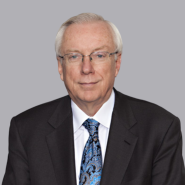Claim Terms Should Be Defined By Intrinsic Evidence And Not Dictionaries
- January 23, 2023
- Article
- Life Sciences News - January 2023 Newsletter
Associated People
In Grace Inst. Indus., LLC. v. Chandler Inst. Co., LLC, Appeal 2021-2370, January 12, 2023, the Federal Circuit reversed a district court determination the claim term “enlarged chamber” was indefinite. The claimed invention involved a viscometer for measuring the viscosity of a drilling fluid under the pressure in down-hole conditions. The problem with prior art methods was that mixing occurred between the fluid used to create the pressure and drilling fluid which cause errors in the measurement. Alternative methods using a seal introduced errors because of the friction between the seal and the fluid. The claim at issue reads:
1. A pressurized device comprising:
(a) a pressure vessel within which is vertically disposed at least one top section filled with a pressurization fluid of a first density and at least one lower section filled with a test sample of a second density,
(b) an enlarged chamber with reduced openings positioned between the at least one top section and the at least one bottom section for communicating pressure with said top section and said lower section within said pressure vessel,
(c) whereby said pressurization fluid would not mix with said test sample because of the nature of their density difference.
The district court interpreted the term “enlarged chamber” by reference to a dictionary and found it indefinite because the term “enlarged” is a term of “degree’ that calls for a comparison against a baseline. The Court reversed because claim construction requires understanding the term in the context of the entire patent, Phillips v. AWH Corp., 415 F.3d 1303, 1313 (Fed. Cir. 2005) (en banc). If the claim term is clear from the intrinsic evidence, there is no reason to resort to extrinsic evidence. The Court noted that here specification described the enlarged chamber as being large enough such that at maximum pressure the chamber is at least half-filled with the drilling fluid. The viscosity measurement is taken in a smaller chamber disposed below the enlarged chamber and an antimixing fin and is always filled with the drilling fluid. While “enlarged chamber” is not a term of art, the intrinsic record guides a skilled artisan to the meaning of that term as used in the patent. The Court found the district court erred relying on extrinsic evidence that contradicts the scope and meaning of “enlarged chamber” as described in the intrinsic record.
The key is when using “terms of degree” to provide a description in the specification as to how the term is to be interpreted. The specification can then provide meaning to the term as sued in the claims.
Recent Newsletter
5 IP Rules to Know to Protect Your Business in the United States (article in French)
Coaching INPI Newsletter










 Counseling & Strategic Advice
Counseling & Strategic Advice IP Transactions
IP Transactions Litigation
Litigation PTAB Proceedings
PTAB Proceedings Start-Up
Start-Up Technology Transfer
Technology Transfer Trademark & Designs
Trademark & Designs U.S. Patent Procurement (Application Drafting & Prosecution)
U.S. Patent Procurement (Application Drafting & Prosecution)








